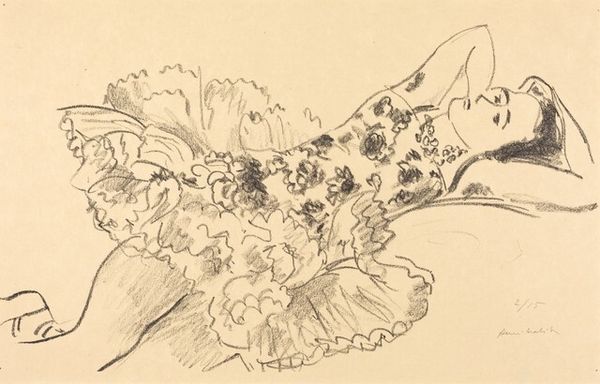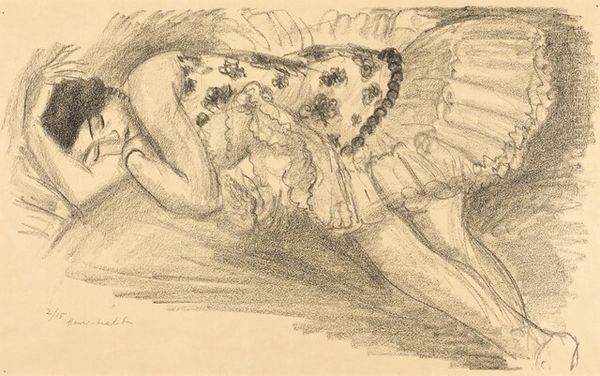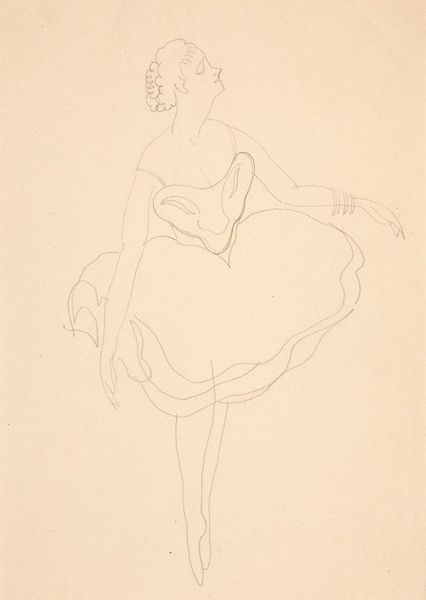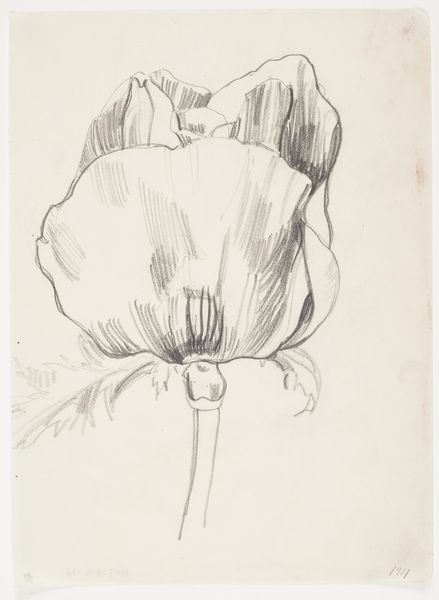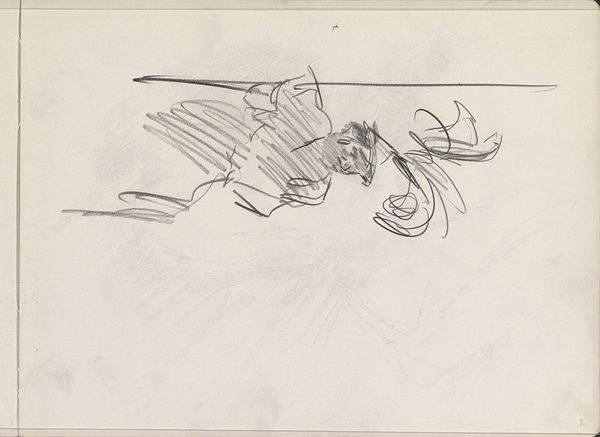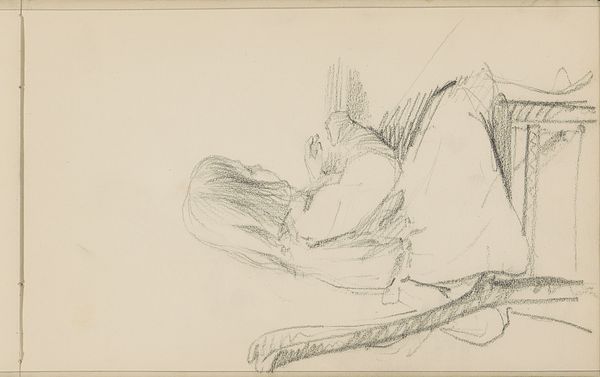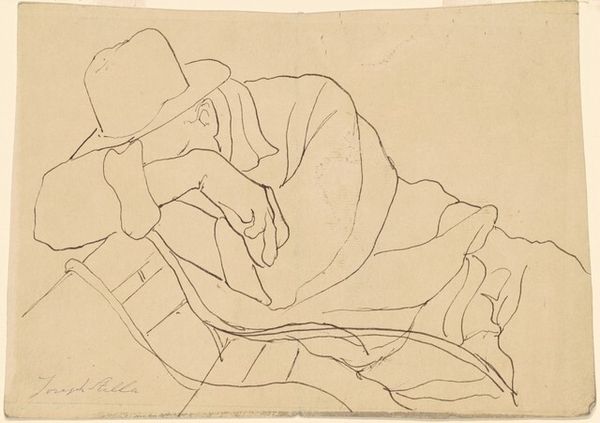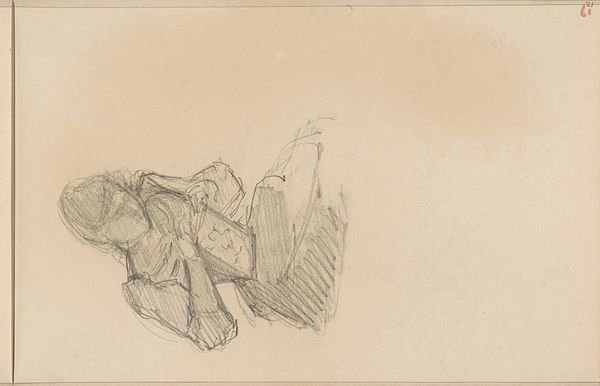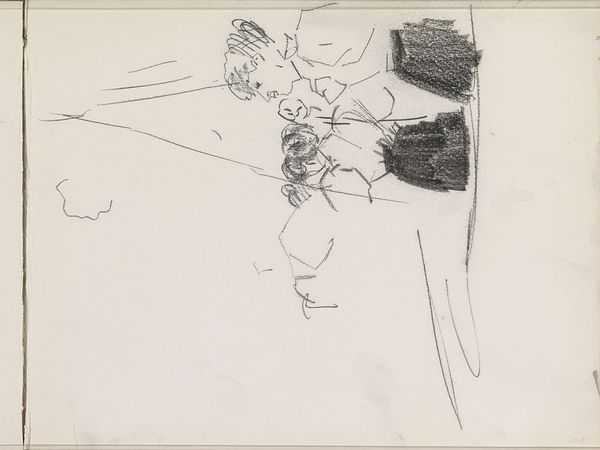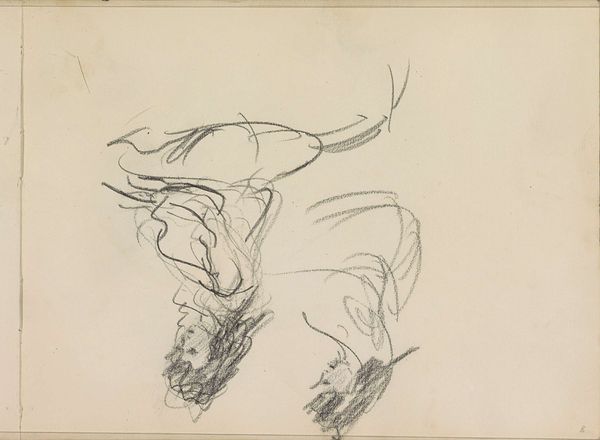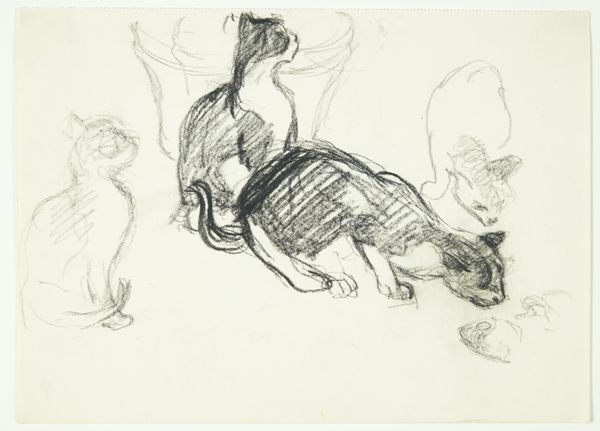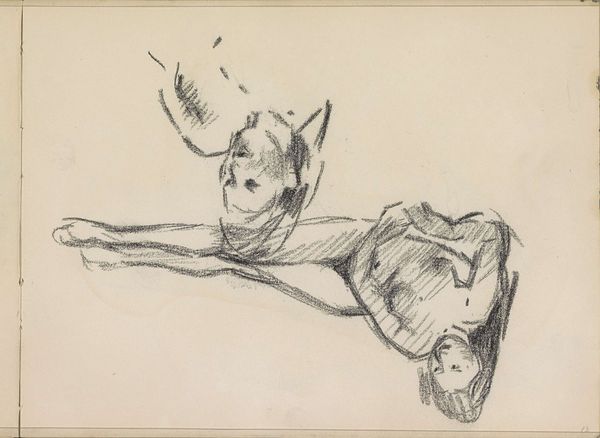
Copyright: National Gallery of Art: CC0 1.0
Curator: Let's take a look at Henri Matisse's "Dix Danseuses IX," created between 1925 and 1926. What are your immediate thoughts? Editor: Exhaustion. The pose, the subject matter—it speaks to a state beyond just rest, doesn't it? Almost melancholic, especially with the subtle hatching giving depth to the otherwise sparse rendering. Curator: It’s a lithograph in pencil on paper. Consider the material constraints and the labor involved. Lithography itself is an indirect process; this isn't a spontaneous sketch from life, but a considered translation of an image onto stone, then paper. Editor: Right. And yet, the choice of pencil maintains a sense of immediacy, despite the technical mediation. Ballerinas have a long history in art, of course—they're an emblem of idealized beauty and grace, but there’s a cost, the severe discipline. Is Matisse referencing this hidden pain? Curator: Potentially, but what of the reception history? Matisse often employed nude models. The intersection of the ‘dancer’ archetype, with her physical presence, and how that impacts production – is she actively involved or coerced? I'm interested in the power dynamics at play during the physical act of drawing this nude form. Editor: True, these images carry cultural weight. The tutu, for example, a visual shorthand for performance and artifice. Even her closed eyes feel significant. There is also the suggestion of movement from the tutu in the background, hinting that she will have to return. She might be on a break now but she can't be resting for too long. Curator: And it's worth noting the commercial context. These prints were produced in multiples, extending their reach. How does that democratize art? Editor: Or does it further commodify the female form? I suppose what resonates with me most is the timelessness of this single figure. That blend of vulnerability and imposed perfection really echoes across generations. Curator: Yes, that’s something to think about. The means of creating this and the subject of this are intertwined; there's also this sense of history that carries through these symbols that you were saying. A print like this lets one consider the nuances in an accessible format. Editor: A poignant dance between public image and private reality—fascinating to unravel.
Comments
No comments
Be the first to comment and join the conversation on the ultimate creative platform.
